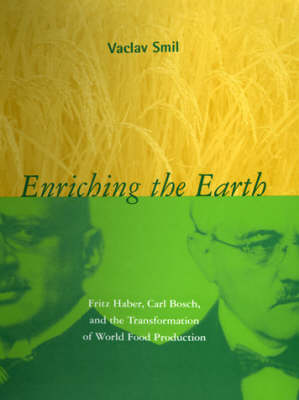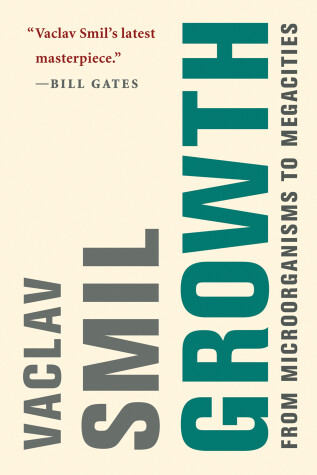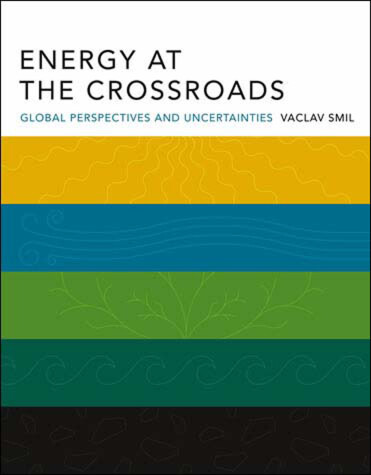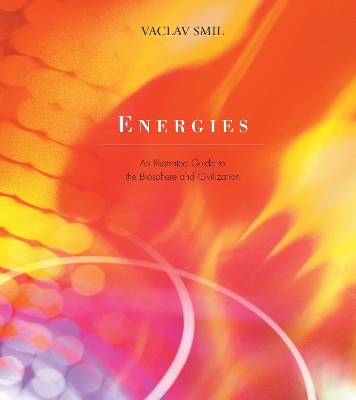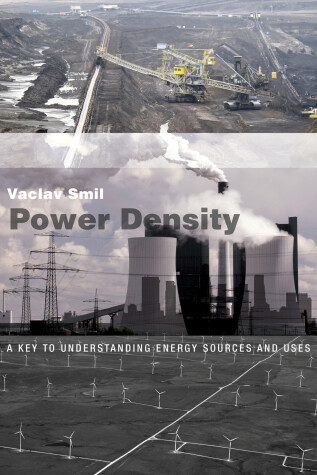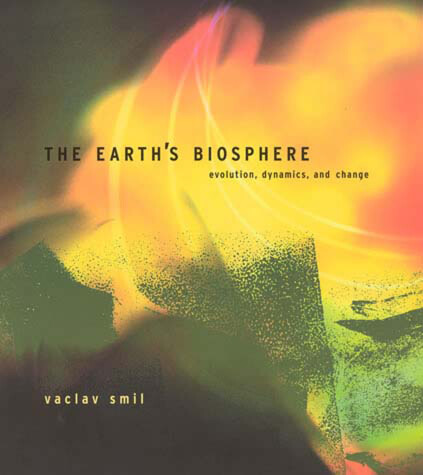The MIT Press
14 total works
The story of how diesel engines and gas turbines, used to power cargo ships and jet airplanes, made today's globally integrated economy possible.
The many books on globalization published over the past few years range from claims that the world is flat to an unlikely rehabilitation of Genghis Khan...
Read moreThe story of how diesel engines and gas turbines, used to power cargo ships and jet airplanes, made today's globally integrated economy possible.
The many books on globalization published over the past few years range from claims that the world is flat to an unlikely rehabilitation of Genghis Khan as a pioneer of global commerce. Missing from these accounts is a consideration of the technologies behind the creation of the globalized economy. What makes it possible for us to move billions of tons of raw materials and manufactured goods from continent to continent? Why are we able to fly almost anywhere on the planet within twenty-four hours? In Prime Movers of Globalization, Vaclav Smil offers a history of two key technical developments that have driven globalization: the high-compression non-sparking internal combustion engines invented by Rudolf Diesel in the 1890s and the gas turbines designed by Frank Whittle and Hans-Joachim Pabst von Ohain in the 1930s. The massive diesel engines that power cargo ships and the gas turbines that propel jet engines, Smil argues, are more important to the global economy than any corporate structure or international trade agreement. Smil compares the efficiency and scale of these two technologies to prime movers of the past, including the sail and the steam engine. The lengthy processes of development, commercialization, and diffusion that the diesel engine and the gas turbine went through, he argues, provide perfect examples of gradual technical advances that receive little attention but have resulted in epochal shifts in global affairs and the global economy.
Finally, it looks at the role of nitrogen in civilization and, in a sad coda, describes the lives of Fritz Haber and Carl Bosch after the discovery of ammonia synthesis.
Growth has been both an unspoken and an explicit aim of our individual and collective striving. It governs the lives of microorganisms and galaxies; it shapes the capabilities of our extraordinarily...
Read moreGrowth has been both an unspoken and an explicit aim of our individual and collective striving. It governs the lives of microorganisms and galaxies; it shapes the capabilities of our extraordinarily large brains and the fortunes of our economies. Growth is manifested in annual increments of continental crust, a rising gross domestic product, a child's growth chart, the spread of cancerous cells. In this magisterial book, Vaclav Smil offers systematic investigation of growth in nature and society, from tiny organisms to the trajectories of empires and civilizations.
Smil takes readers from bacterial invasions through animal metabolisms to megacities and the global economy. He begins with organisms whose mature sizes range from microscopic to enormous, looking at disease-causing microbes, the cultivation of staple crops, and human growth from infancy to adulthood. He examines the growth of energy conversions and man-made objects that enable economic activities—developments that have been essential to civilization. Finally, he looks at growth in complex systems, beginning with the growth of human populations and proceeding to the growth of cities. He considers the challenges of tracing the growth of empires and civilizations, explaining that we can chart the growth of organisms across individual and evolutionary time, but that the progress of societies and economies, not so linear, encompasses both decline and renewal. The trajectory of modern civilization, driven by competing imperatives of material growth and biospheric limits, Smil tells us, remains uncertain.
In Energy at the Crossroads, Vaclav Smil considers the twenty-first century's crucial question: how to reconcile the modern world's unceasing demand for energy with the absolute necessity...
Read moreIn Energy at the Crossroads, Vaclav Smil considers the twenty-first century's crucial question: how to reconcile the modern world's unceasing demand for energy with the absolute necessity to preserve the integrity of the biosphere. With this book he offers a comprehensive, accessible guide to today's complex energy issues—how to think clearly and logically about what is possible and what is desirable in our energy future.
After a century of unprecedented production growth, technical innovation, and expanded consumption, the world faces a number of critical energy challenges arising from unequal resource distribution, changing demand patterns, and environmental limitations. The fundamental message of Energy at the Crossroads is that our dependence on fossil fuels must be reduced not because of any imminent resource shortages but because the widespread burning of oil, coal, and natural gas damages the biosphere and presents increasing economic and security problems as the world relies on more expensive supplies and Middle Eastern crude oil.
Smil begins with an overview of the twentieth century's long-term trends and achievements in energy production. He then discusses energy prices, the real cost of energy, and "energy linkages"—the effect energy issues have on the economy, on quality of life, on the environment, and in wartime. He discusses the pitfalls of forecasting, giving many examples of failed predictions and showing that unexpected events can disprove complex models. And he examines the pros and cons not only of fossil fuels but also of alternative fuels such as hydroenergy, biomass energy, wind power, and solar power. Finally, he considers the future, focusing on what really matters, what works, what is realistic, and which outcomes are most desirable.
The book concludes with an examination of general patterns, trends, and socioeconomic considerations of energy use today, looking at correlations between energy and value, energy and the economy, energy and quality of life, and energy futures. Throughout the book, Smil chooses to emphasize the complexities and peculiarities of the real world, and the counterintuitive outcomes of many of its processes, over abstract models. Energy in Nature and Society provides a unique, comprehensive, single-volume analysis and reference source on all important energy matters, from natural to industrial energy flows, from fuels to food, from the Earth's formation to possible energy futures, and can serve as a text for courses in energy studies, global ecology, earth systems science, biology, and chemistry. Vaclav Smil is Distinguished Professor at the University of Manitoba and the author of many books, including Energy at the Crossroads (2003), The Earth's Biosphere: Evolution, Dynamics, and Change (2002), and Energies: An Illustrated Guide to the Biosphere and Civilization (1998), all of which are published by The MIT Press.
“There's no author whose books I look forward to more than Vaclav Smil.”
—Bill Gates
In this book, Vaclav Smil argues that power density is a...
Read more“There's no author whose books I look forward to more than Vaclav Smil.”
—Bill Gates
In this book, Vaclav Smil argues that power density is a key determinant of the nature and dynamics of energy systems. Any understanding of complex energy systems must rely on quantitative measures of many fundamental variables. Power density—the rate of energy flux per unit of area—is an important but largely overlooked measure. Smil provides the first systematic, quantitative appraisal of power density, offering detailed reviews of the power densities of renewable energy flows, fossil fuels, thermal electricity generation, and all common energy uses.
Smil shows that careful quantification, critical appraisals, and revealing comparisons of power densities make possible a deeper understanding of the ways we harness, convert, and use energies. Conscientious assessment of power densities, he argues, proves particularly revealing when contrasting the fossil fuel–based energy system with renewable energy conversions.
Smil explains that modern civilization has evolved as a direct expression of the high power densities of fossil fuel extraction. He argues that our inevitable (and desirable) move to new energy arrangements involving conversions of lower-density renewable energy sources will require our society—currently dominated by megacities and concentrated industrial production—to undergo a profound spatial restructuring of its energy system.
In Made in the USA, Vaclav Smil powerfully rebuts the notion that manufacturing is a relic of predigital history and that the loss of American manufacturing is a desirable evolutionary step toward...Read more
In Made in the USA, Vaclav Smil powerfully rebuts the notion that manufacturing is a relic of predigital history and that the loss of American manufacturing is a desirable evolutionary step toward a pure service economy. Smil argues that no advanced economy can prosper without a strong, innovative manufacturing sector and the jobs it creates.
Smil explains how manufacturing became a fundamental force behind America's economic, strategic, and social dominance. He describes American manufacturing's rapid rise at the end of the nineteenth century, its consolidation and modernization between the two world wars, its role as an enabler of mass consumption after 1945, and its recent decline. Some economists argue that shipping low-value jobs overseas matters little because the high-value work remains in the United States. But, asks Smil, do we want a society that consists of a small population of workers doing high-value-added work and masses of unemployed?
Smil assesses various suggestions for solving America's manufacturing crisis, including lowering corporate tax rates, promoting research and development, and improving public education. Will America act to preserve and reinvigorate its manufacturing? It is crucial to our social and economic well-being; but, Smil warns, the odds are no better than even.
In his detailed and comprehensive account, Smil presents the best possible quantifications of past and current global losses in order to assess the evolution and extent of biomass harvests. Drawing on the latest work in disciplines ranging from anthropology to environmental science, Smil offers a valuable long-term, planet-wide perspective on human-caused environmental change.
In his latest book, Vaclav Smil tells the story of the Earth's biosphere from its origins to its near and long-term future. He explains the workings of its parts and what is known about their interactions. With...
Read moreIn his latest book, Vaclav Smil tells the story of the Earth's biosphere from its origins to its near and long-term future. He explains the workings of its parts and what is known about their interactions. With essay-like flair, he examines the biosphere's physics, chemistry, biology, geology, oceanography, energy, climatology, and ecology, as well as the changes caused by human activity. He provides both the basics of the story and surprising asides illustrating critical but often neglected aspects of biospheric complexity.
Smil begins with a history of the modern idea of the biosphere, focusing on the development of the concept by Russian scientist Vladimir Vernadsky. He explores the probability of life elsewhere in the universe, life's evolution and metabolism, and the biosphere's extent, mass, productivity, and grand-scale organization. Smil offers fresh approaches to such well-known phenomena as solar radiation and plate tectonics and introduces lesser-known topics such as the quarter-power scaling of animal and plant metabolism across body sizes and metabolic pathways. He also examines two sets of fundamental relationships that have profoundly influenced the evolution of life and the persistence of the biosphere: symbiosis and the role of life's complexity as a determinant of biomass productivity and resilience. And he voices concern about the future course of human-caused global environmental change, which could compromise the biosphere's integrity and threaten the survival of modern civilization.


